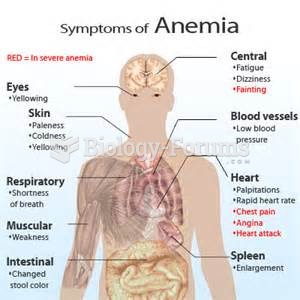|
|
|
Your skin wrinkles if you stay in the bathtub a long time because the outermost layer of skin (which consists of dead keratin) swells when it absorbs water. It is tightly attached to the skin below it, so it compensates for the increased area by wrinkling. This happens to the hands and feet because they have the thickest layer of dead keratin cells.
On average, someone in the United States has a stroke about every 40 seconds. This is about 795,000 people per year.
There are approximately 3 million unintended pregnancies in the United States each year.
The immune system needs 9.5 hours of sleep in total darkness to recharge completely.
Certain chemicals, after ingestion, can be converted by the body into cyanide. Most of these chemicals have been removed from the market, but some old nail polish remover, solvents, and plastics manufacturing solutions can contain these substances.







